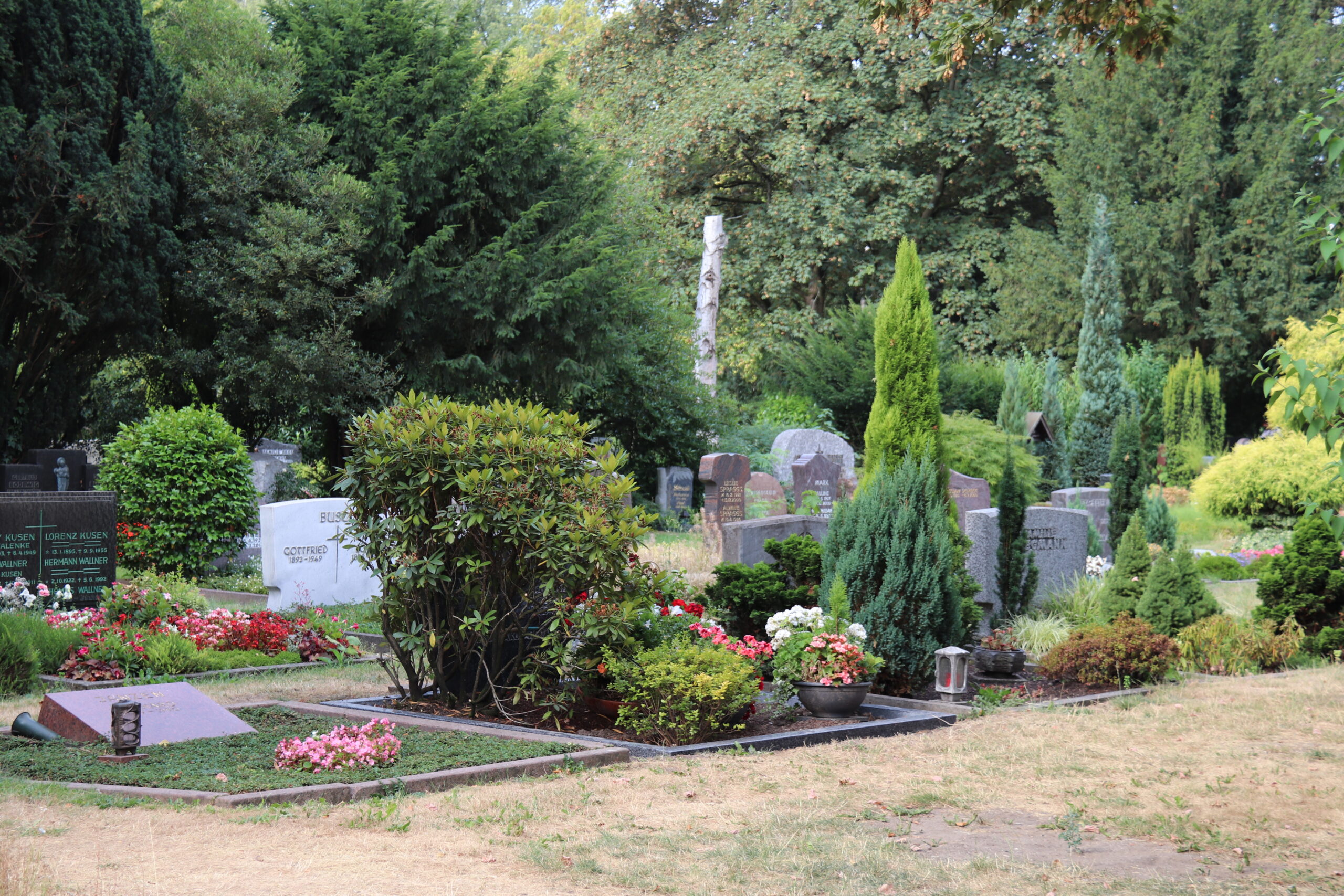
[Kolumne für Mainichi Weekly, zuerst veröffentlicht im Herbst 2018]
The multi-family house we have been living in since we moved to Duesseldorf has some adorable features. One of them is the quiet neighborhood in which it is located. This quiet is mainly due to the fact that our home is located next to a graveyard, framed by huge trees. From our perspective, it’s more of a place of the living, a kind of park, full of blooming plants, rather than a place of the dead. In spring, birds build their nests, and in autumn, squirrels bustle around between the tombstones.
My South Korean friend Minjeong once told me that houses next to a graveyard are considered not to be good places to live in parts of Asia, as the spirits of the dead are believed to still be around. There may also be Germans who would rather not choose to live so close to the dead. The idea that their “spirits are still around,” however, is not very common in societies whichhave been shaped by Christian beliefs. The bodies are nothing more than remains — the spirits are with God.
We often walk through the graveyard to get to the shops or the playgrounds. It’s a nice walk, as there is a variety of plant life as diverse as the shapes of the tombstones. Quite often, I find myself reading the names on the stones while walking by, searching for rare and beautiful ones and imagining what those people might have looked like. The decorations on the graves also tell a story: whether or not family members visit, what kind of taste the family has and whether family has been there recently. The latter can be measured by the candle placed on almost any grave. When it is lit, someone has visited in the last few days.
The grave candles are manufactured exclusively for use in graveyards. They are sold in red plastic casings, which protect them from the wind. I only noticed that the tradition of grave candles is not common anywhere else in the world when I visited a Japanese friend. He had placed one of those grave candles on his dining table. First, I was quite upset, as I thought it was some kind of morbid joke. But then, I found out that he wasn’t aware of the meaning of the candle at all.
Despite cultural differences, there is one thing almost all developed countries have in common: It is not cheap to buy your final home. A regular funeral costs including a grave at least 10,000 euros (about 1.2 million yen). To cut costs in the event of their death, these days, many people state in their wills that they want to be cremated and want their urns buried. This runs contrary to the traditional Christian burial of the body.
According to the website of the Federal Association of German Undertakers, the rate of cremations in Germany is currently around 55 percent and rising. As a consequence, Christian graveyards are changing their appearance. Instead of huge individual graves, they offer a greater number of smaller and spaces for urns. In some regions, it is even possible to bury an urn in a designated area in the forest, called a “Friedwald,” between the roots of the trees.
For most of the year, the graveyard next to our house is more or less invisible to us. Only in winter, when all the leaves are gone, does it become part of our daily lives. From our apartment on the third floor, we can see people visiting the graves, and at night, we can see the candle lights, appearing red because of their casings, through the barebranched trees.